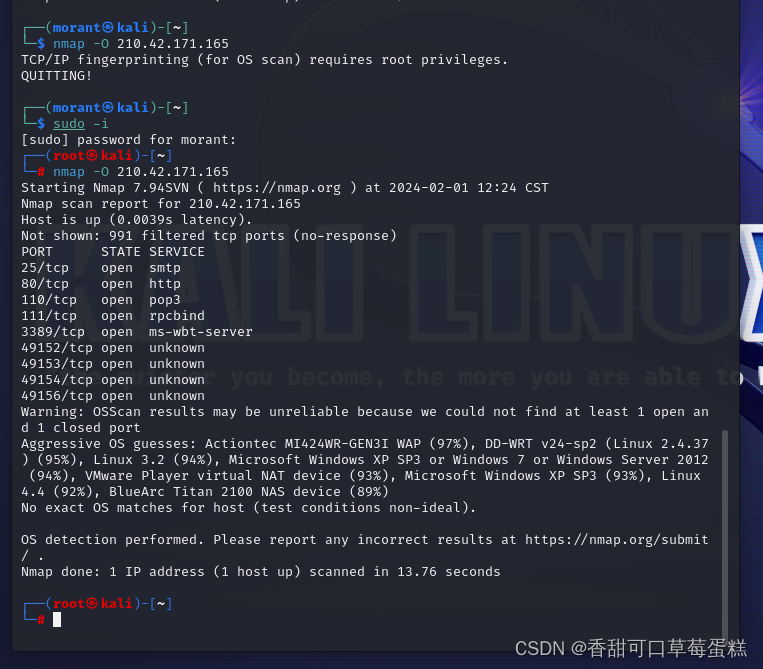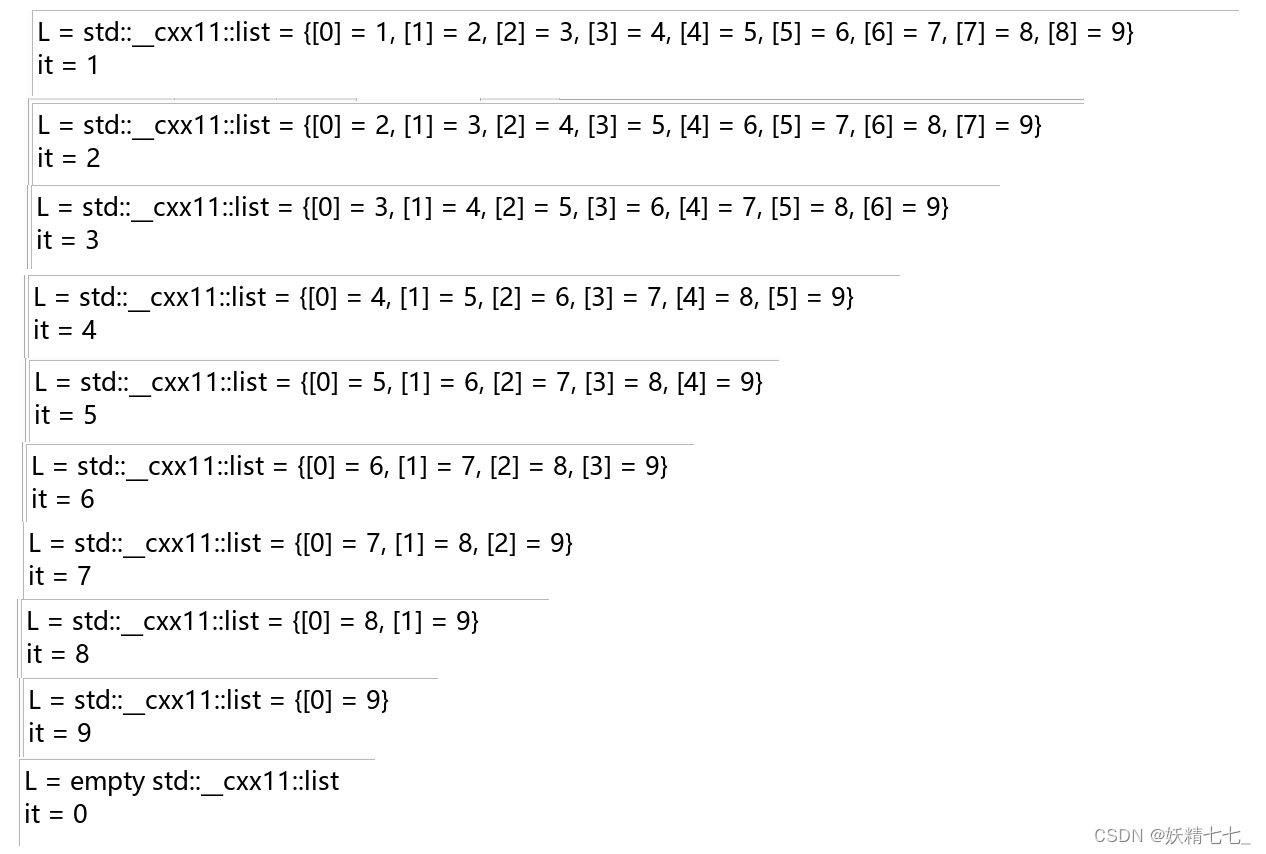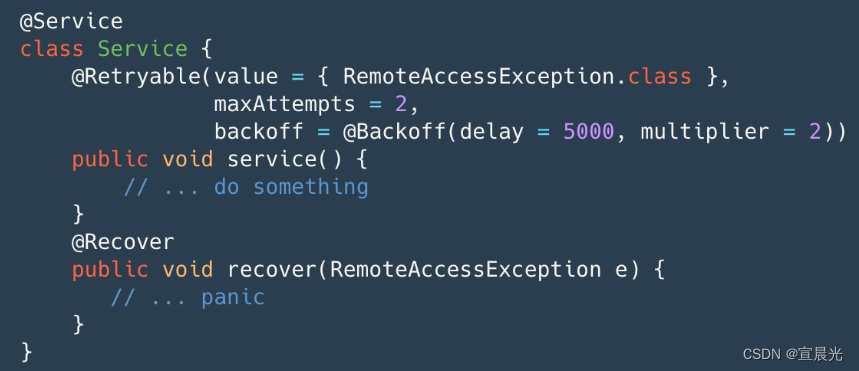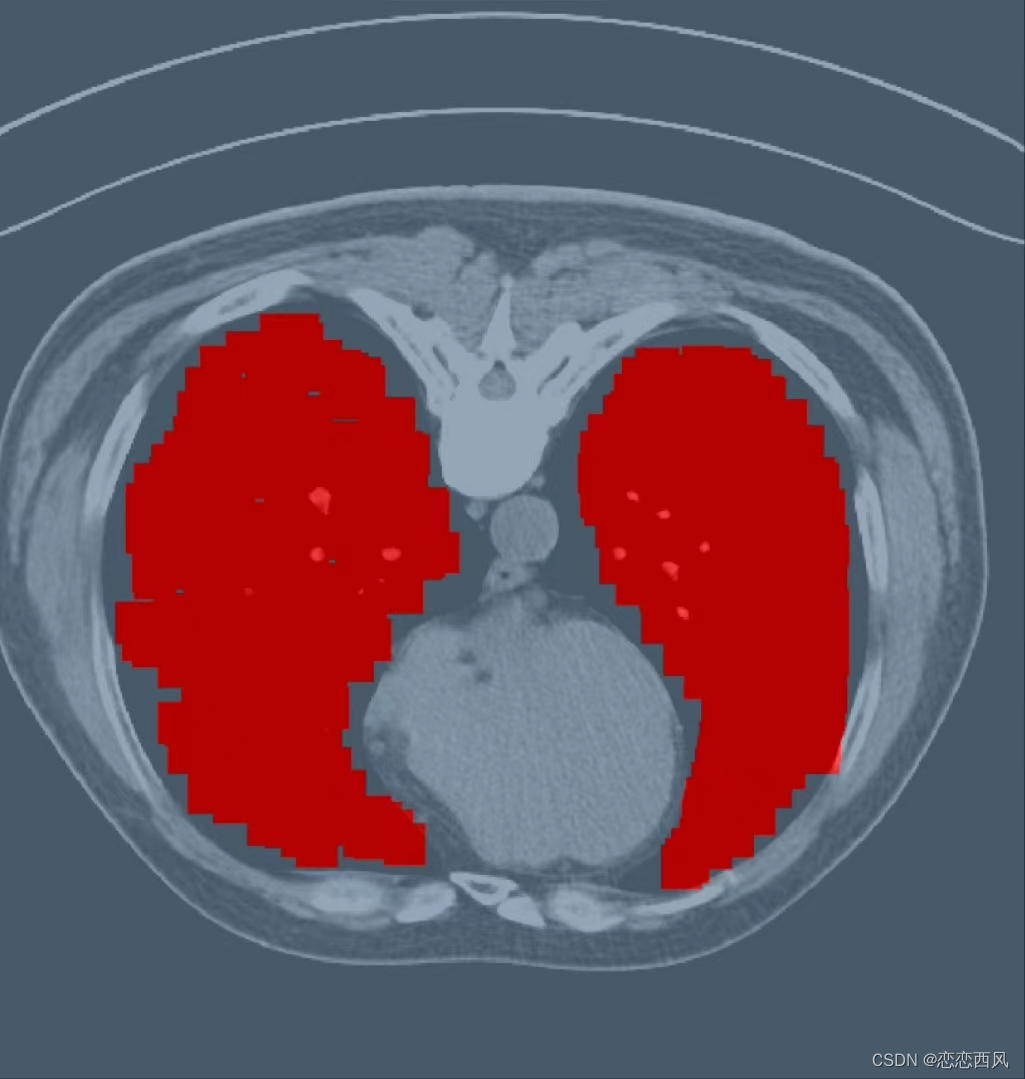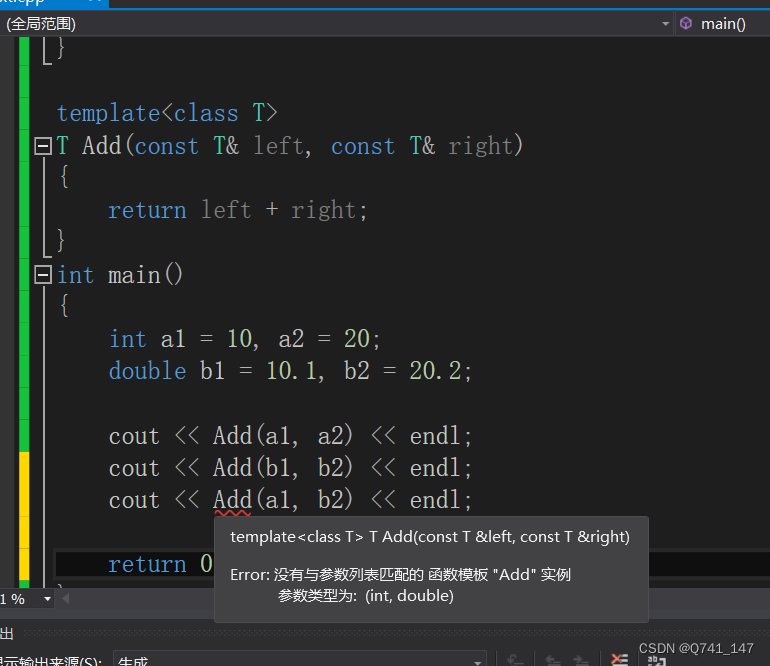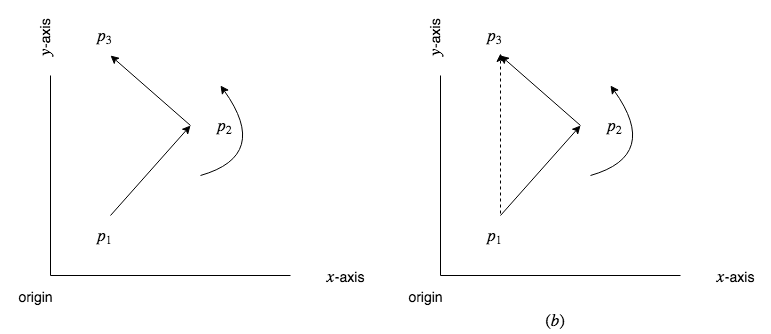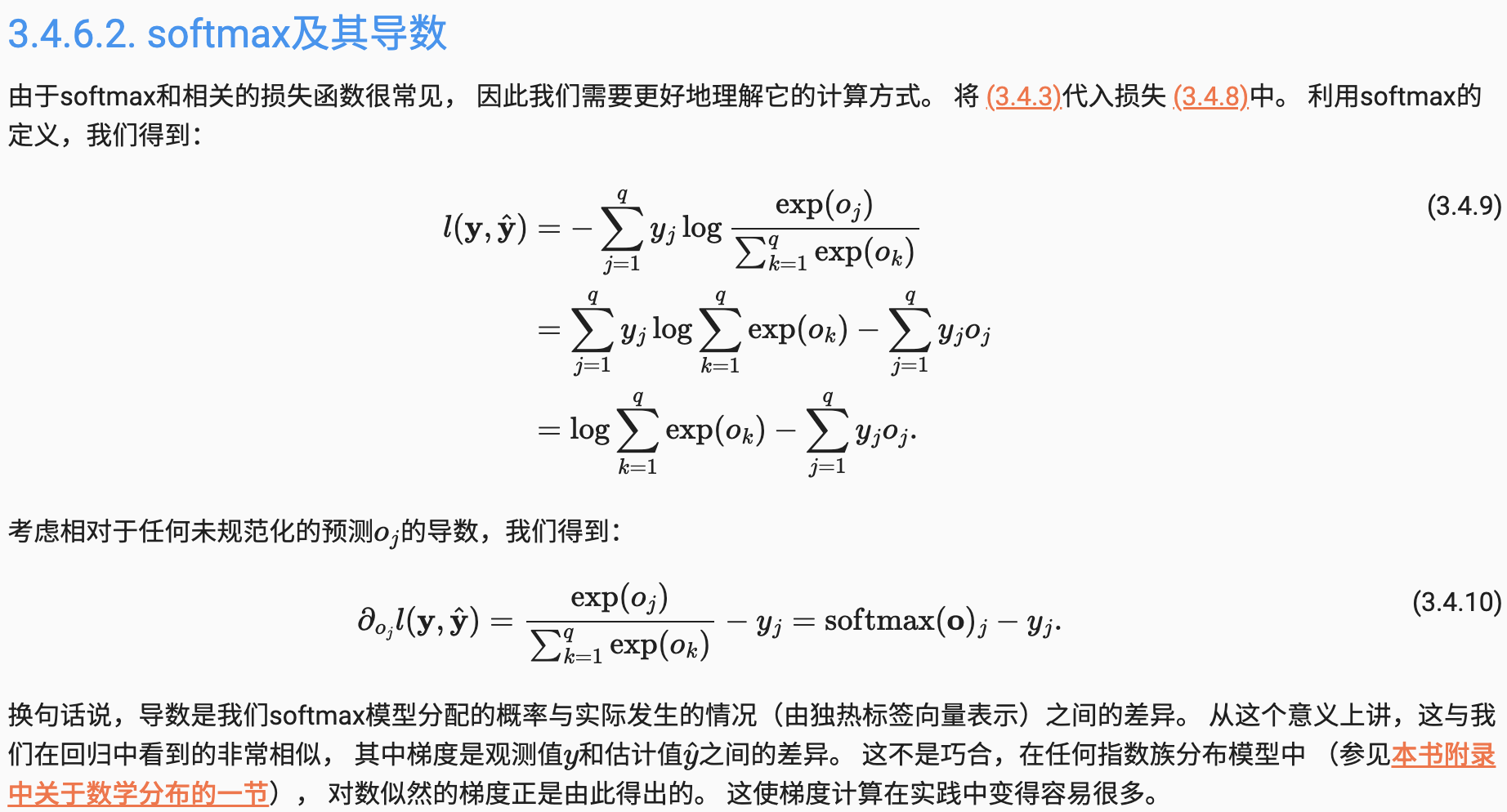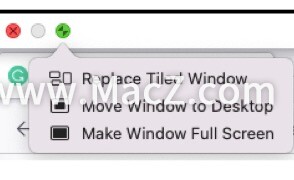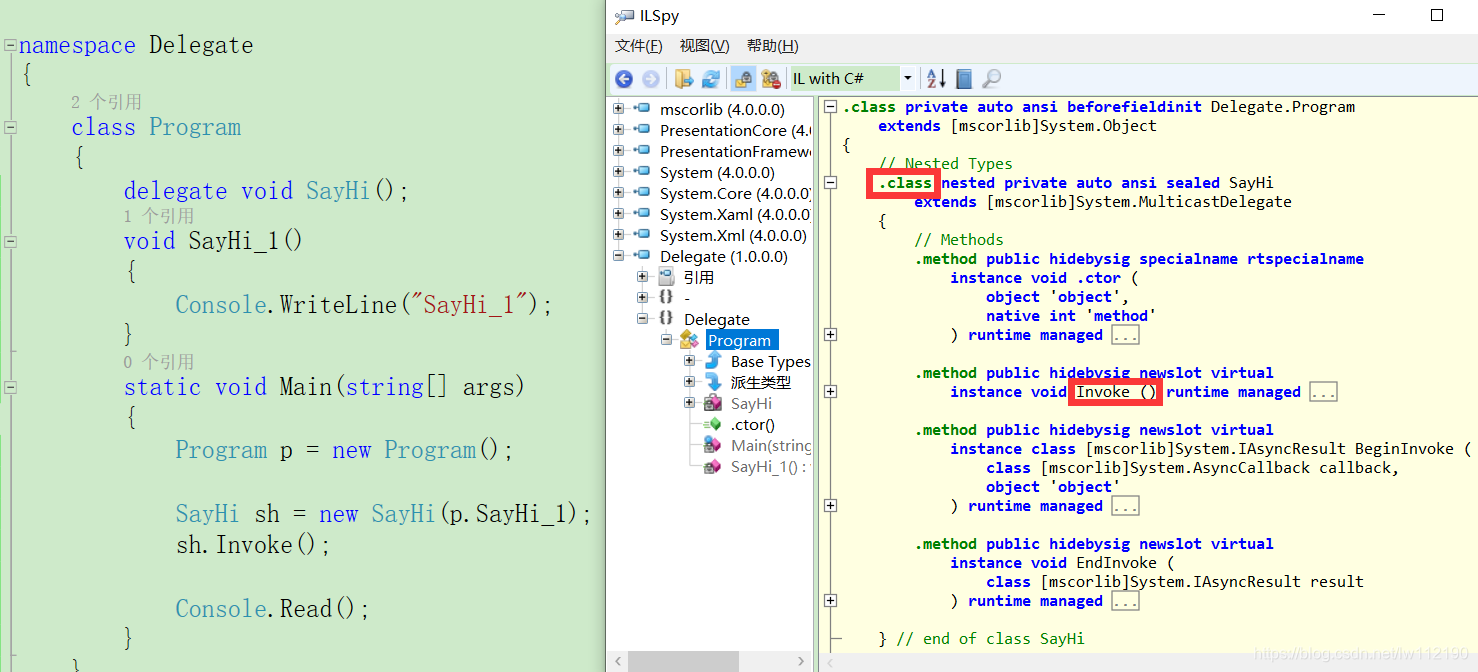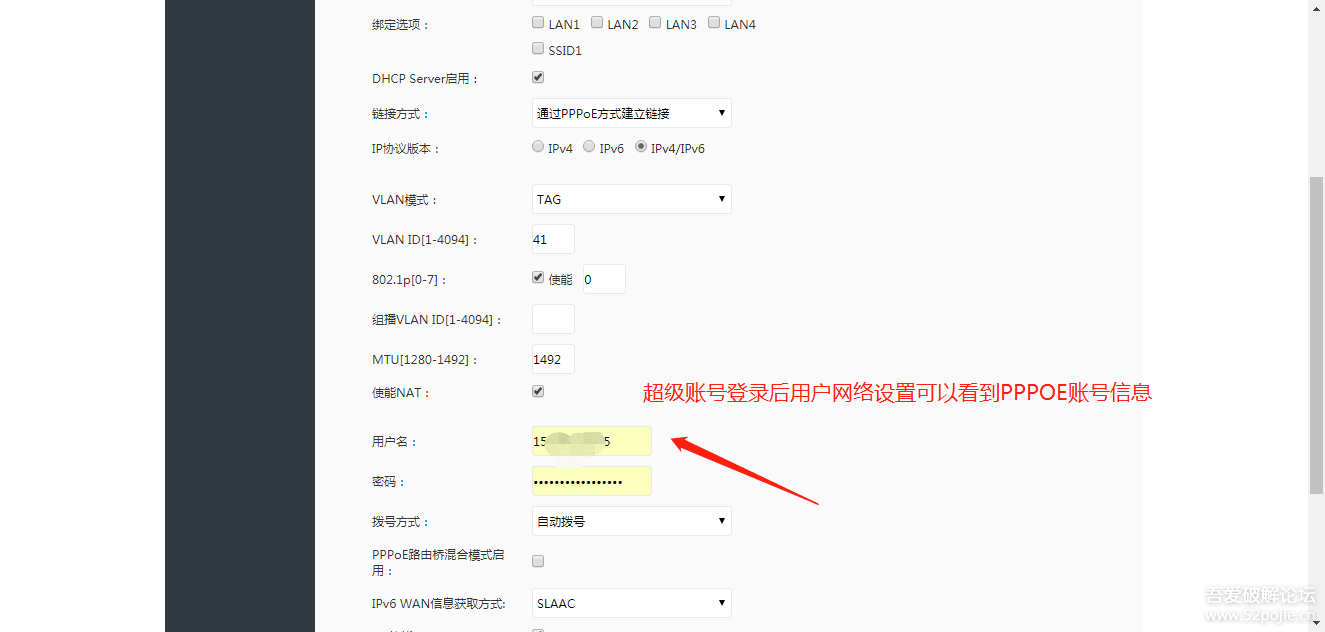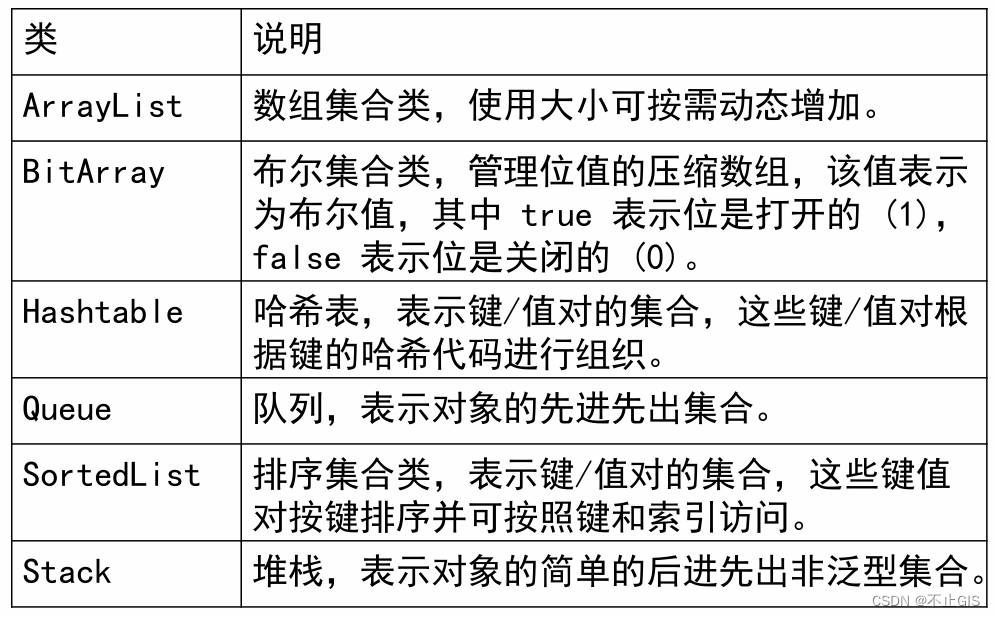Python3集合 set 心得
本文是个人在学习中的一些心得,不能保证文中的内容准确,欢迎大家批评指正。
集合 set 是Python中的一种数据容器,集合有2种定义方式。
1、花括号 {} ,花括号内加入集合的元素,元素之间用逗号 , 分隔。
上机代码:
aSet = {"a","abc",1,1.2}
print(aSet)
print(type(aSet))
结果截图:
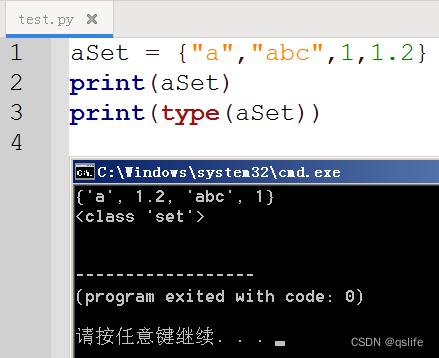
注意:花括号 {} 中如果是空的,将建立一个空的字典。
上机代码:
aSet = {}
print(aSet)
print(type(aSet))
结果截图:
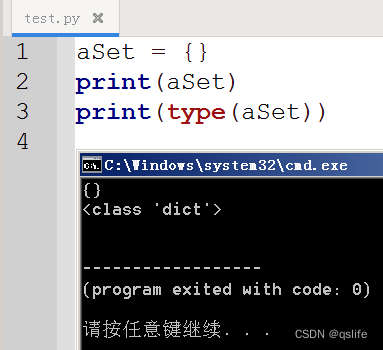
2、函数 set() 不加参数,建立一个空的集合
上机代码:
aSet = set()
print(aSet)
print(type(aSet))
结果截图:
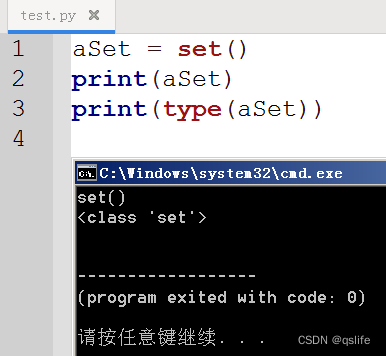
函数 set 原理及可加参数:将可迭代对象进行遍历后的元素添加到集合中。
| 原文 | 重点解析 |
| 将可迭代对象 | 可迭代对象:列表、元组、字典、字符串、集合 |
| 进行遍历后的元素 | 字符串遍历后的元素是单个的字符的字符串 |
| 添加到集合中 |
函数 set 参数使用可迭代对象:列表
上机代码:
print("函数 set 原理:将可迭代对象进行遍历后的元素添加到集合中")
print("函数 set 参数使用可迭代对象:列表")
aSet = set(["a","abc",1,1.2])
print(aSet)
print(type(aSet))
函数 set 参数使用可迭代对象:元组
上机代码:
print("函数 set 原理:将可迭代对象进行遍历后的元素添加到集合中")
print("函数 set 参数使用可迭代对象:元组 tuple")
aSet = set(("a","abc",1,1.2))
print(aSet)
print(type(aSet))
函数 set 参数使用可迭代对象:字典
上机代码:
print("函数 set 原理:将可迭代对象进行遍历后的元素添加到集合中")
print("函数 set 参数使用可迭代对象:字典")
aSet = set({"#1":"a","#2":"abc","#3":1,"#4":1.2})
# 参数中字典的键成为集合的元素,值被抛弃
print(aSet)
print(type(aSet))
函数 set 参数使用可迭代对象:字符串
上机代码:
print("函数 set 原理:将可迭代对象进行遍历后的元素添加到集合中")
print("函数 set 参数使用可迭代对象:字符串 string")
aSet = set("abcefg")
# 参数中可迭代对象字符串被遍历后的元素单个字符添加到集合中
print(aSet)
print(type(aSet))
函数 set 参数使用可迭代对象:单个字符的字符串
上机代码:
print("函数 set 原理:将可迭代对象进行遍历后的元素添加到集合中")
print("函数 set 参数使用可迭代对象:单个字符的字符串 string")
bSet = set("q")
# 参数中可迭代对象字符串被遍历后的元素单个字符添加到集合中
print(bSet)
print(type(bSet))
函数 set 参数使用可迭代对象:集合
上机代码:
print("函数 set 原理:将可迭代对象进行遍历后的元素添加到集合中")
print("函数 set 参数使用可迭代对象:集合 set")
aSet = {"abc",1,1.1}
bSet = set(aSet)
print(bSet)
print(type(bSet))
上机代码合集:
print("函数 set 原理:将可迭代对象进行遍历后的元素添加到集合中")
print("函数 set 参数使用可迭代对象:列表")
aSet = set(["a","abc",1,1.2])
print(aSet)
print(type(aSet))
print("函数 set 参数使用可迭代对象:元组 tuple")
aSet = set(("a","abc",1,1.2))
print(aSet)
print(type(aSet))
print("函数 set 参数使用可迭代对象:字典")
aSet = set({"#1":"a","#2":"abc","#3":1,"#4":1.2})
# 参数中字典的键成为集合的元素,值被抛弃
print(aSet)
print(type(aSet))
print("函数 set 参数使用可迭代对象:字符串 string")
aSet = set("abcefg")
# 参数中可迭代对象字符串被遍历后的元素单个字符添加到集合中
print(aSet)
print(type(aSet))
print("函数 set 参数使用可迭代对象:单个字符的字符串 string")
bSet = set("q")
# 参数中可迭代对象字符串被遍历后的元素单个字符添加到集合中
print(bSet)
print(type(bSet))
print("函数 set 参数使用可迭代对象:集合 set")
aSet = {"abc",1,1.1}
bSet = set(aSet)
print(bSet)
print(type(bSet))
【结果截图合集:】
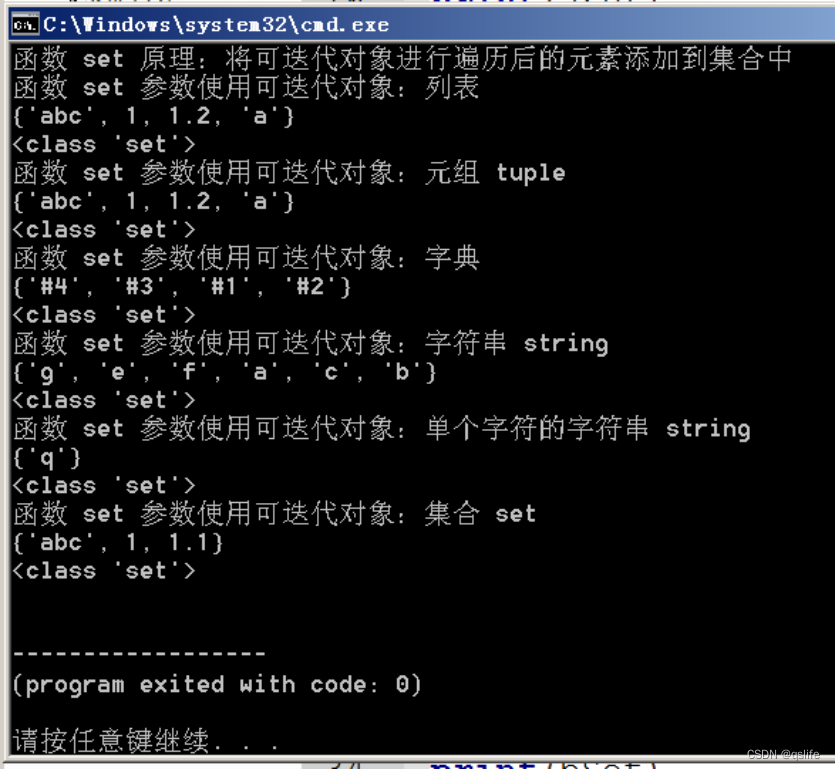
函数 set 不可加参数:不可迭代对象,如整形 int ,浮点型 float
上机代码:
print("函数 set 原理:将可迭代对象进行遍历后的元素添加到集合中")
print("函数 set 参数使用不可迭代对象:整型 int")
aSet = set(1)
print(aSet)
print(type(aSet))
结果截图:

错误提示:
TypeError:’int’ object is not iterable
上机代码:
print("函数 set 原理:将可迭代对象进行遍历后的元素添加到集合中")
print("函数 set 参数使用不可迭代对象:浮点型 float")
aSet = set(1.414)
print(aSet)
print(type(aSet))
结果截图:
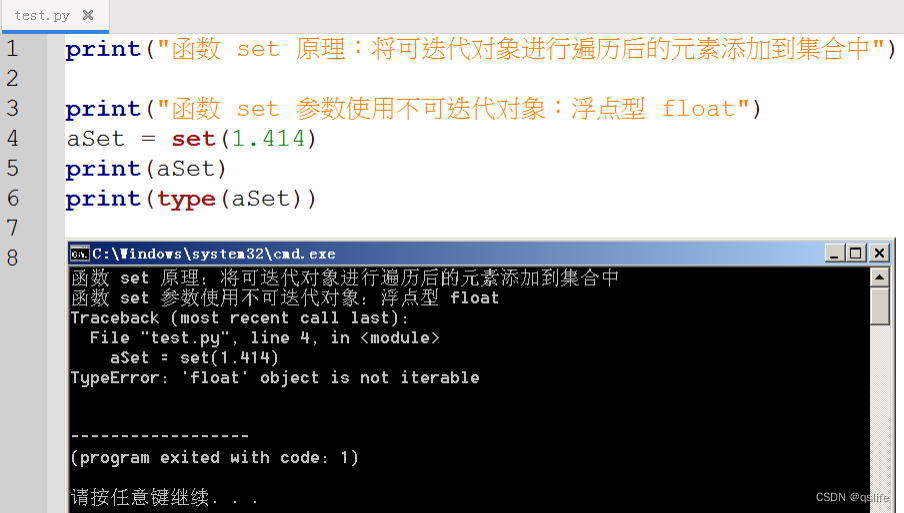
错误提示:
TypeError:’float’ object is not iterable

